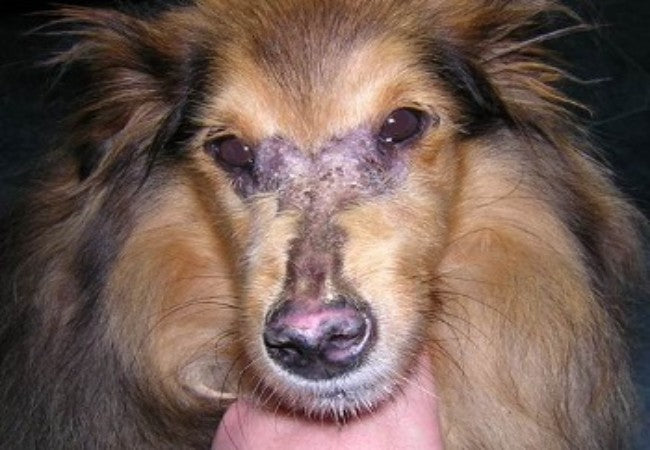Vet’s 2025 Guide to Polymyositis & Dermatomyositis in Dogs – Immune Muscle Disorders 🐶

In this article
Vet’s 2025 Guide to Polymyositis & Dermatomyositis in Dogs – Immune Muscle Disorders 🐶
By Dr. Duncan Houston BVSc
💡 What Are These Conditions?
Polymyositis is an inflammatory, immune-mediated condition causing skeletal muscle inflammation and weakness. It may be acute or chronic. Dermatomyositis adds skin signs—red, crusted lesions—typically in Collies, Shelties, and Australian Cattle Dogs.
⚠️ Who Gets Affected?
- Polymyositis: often adult large breeds like Newfoundlands and boxers
- Dermatomyositis: young collies, Shelties, Aussies—often before 6 months old
🧩 Signs & Symptoms
- Muscle weakness in proximal limbs—difficulty rising, walking
- Stiff/stilted gait, muscle pain, exercise intolerance, muscle swelling
- Muscle atrophy over time
- Possible megaesophagus/regurgitation if the esophageal muscle involved
- In dermatomyositis: facial, footpad, ear-tip lesions—erythema, crusting, hair loss
🔍 Causes & Triggers
- Autoimmune reactions, sometimes infection, or paraneoplastic processes
- Possible genetic predisposition in certain breeds
🧪 How It’s Diagnosed
Diagnosis involves:
- History & physical exam—gait, skin, and swallowing issues
- Blood tests—elevated muscle enzymes (CK, AST)
- Electromyography—myopathic patterns
- Muscle and/or skin biopsy—definitive for inflammatory changes
- Imaging (X-ray) if swallowing/regurgitation is present
💊 Treatment Strategies
- Corticosteroids (e.g. prednisone) are first-line for immune suppression
- Additional immunosuppressives: azathioprine, cyclosporine, methotrexate if needed
- Treat any underlying infection or cancer
- Pain relief and physiotherapy to support muscle recovery
- Feeding modifications (elevated bowls, consistency) for megaesophagus
- Skin care in dermatomyositis: avoid sun exposure, use topical steroids or antimicrobials as needed
📈 Prognosis & Monitoring
- Polymyositis: usually good with treatment, though relapses are common
- Dermatomyositis: skin flare-ups may recur; muscle involvement depends on severity
- Regular rechecks: enzyme levels, muscle strength, skin evaluation
🛡️ Prevention & Owner Action
- Avoid known triggers—vaccines or drugs if previously implicated
- Early veterinary evaluation if weakness, skin lesions, or swallowing trouble appear
- Genetic counseling—avoid breeding affected dogs
📲 Tools from Ask A Vet, Woopf & Purrz
- Ask A Vet – consult immediately for flare-ups or new symptoms 📱
🌟 Case Example
Case: Jasper, a 3‑year‑old Boxer, developed muscle weakness and a stiff gait. Bloodwork showed elevated CK; biopsy confirmed polymyositis. Treated with prednisone and azathioprine with steady improvement over weeks. Episodes monitored and managed with Ask A Vet follow‑ups. 🐾
✅ Key Takeaways
- Polymyositis = muscle inflammation; dermatomyositis = muscle + skin
- Signs: weakness, pain, gait changes, skin lesions, and swallowing issues
- Diagnosis via enzymes, EMG, biopsy
- Immunosuppressive therapy is effective; relapses need monitoring
- Owner vigilance + Ask A Vet access crucial for flare management 💪
📥 Get Support Anytime
If your dog shows signs like muscle weakness, stiffness, or skin lesions, download the Ask A Vet app for live advice and care planning. Visit AskAVet.com now. 🐾🩺






